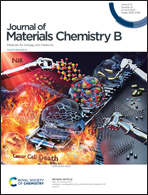Metal–organic framework-based adsorbents for blood purification: progress, challenges, and prospects
Abstract
Blood purification, such as hemodialysis (HD), plasma exchange (PE), and hemoperfusion (HP), is widely applied in patients with organ failure (such as kidney and liver failure). Among them, HP mainly relies on porous adsorbents to efficiently adsorb accumulated metabolic wastes and toxins, thus improving purification efficiency. Metal–organic frameworks (MOFs), with a high porosity, large surface area, high loading capacity, and tailorable topology, are emerging as some of the most promising materials for HP. Compared with non-metal framework counterparts, the self-built metal centers of MOFs feature the intrinsic advantages of coordination with toxin molecules. However, research on MOFs in blood purification is insufficient, particularly in contrast to materials applied in other biomedical applications. Thus, to broaden this area, this review first discusses the essential characteristics, potential mechanisms, and structure–function relationship between MOFs and toxin adsorption based on porosity, topology, ligand functionalization, metal centers, and toxin types. Moreover, the stability, utilization safety, and hemocompatibility of MOFs are illustrated for adsorbent selection. The current development and progress in MOF composites for HD, HP, and extracorporeal membrane oxygenation (ECMO) are also summarized to highlight their practicability. Finally, we propose future opportunities and challenges from materials design and manufacture to the computational prediction of MOFs in blood purification. It is anticipated that our review will expand the interest of researchers for more impact in this area.

- This article is part of the themed collection: Journal of Materials Chemistry B Recent Review Articles


 Please wait while we load your content...
Please wait while we load your content...